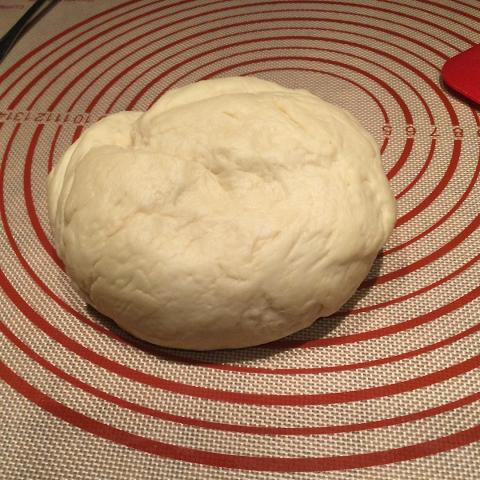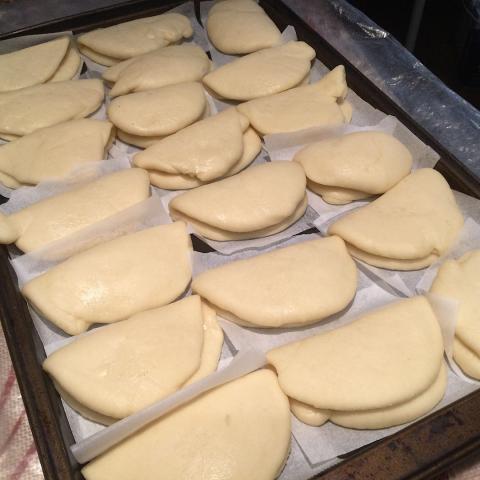Inspiration
I was away from my Toronto place for 7 months, living alone, working on projects and losing 55 pounds. When I came back, I was ready to get back into baking!
Last weekend we made onion soup and I made baguettes to hold up the broiled gruyere cheese on top. We roasted then pressure-cooked beef neck to make the broth which left us with lots of tasty beef bits. The beef seemed like a great filling for a steamed bun. I remember eating bao at a Toronto place... they were delicious but horribly expensive. As usual, that inspired me to make my own.
Beef filling needed some pickled vegetables, so I pulled out my mandolin and ripple blade earlier this week and sliced up carrots, cucumbers, red onion, celery, red cabbage and pickled them in vinegar, garlic and spices for a few days. I managed to use the mandolin extensively without a single injury :) My wife mixed some pickled ginger in mayo to provide a spread. She also seasoned the beef with black bean sauce and other stuff and I sneaked in some lime juice to bring it alive.
Today, I made the bao.
Method
I used the steamed bao recipe from another TFL member. It worked perfectly. This is an enriched dough with milk, oil and sugar and it uses two rising agents: yeast and baking powder. Fun!
https://www.thefreshloaf.com/node/38282/chinese-steamed-buns
Process
A lovely enriched dough, hand kneaded and proofed.
Divided into 20 pieces of 30g each. The dough was somewhat firm. Not tacky at all.
Rolled a little thinner than 1/4 inch. These were springy fellas so I rolled some a few times because they shrank back a bit. That's an iPad 2 on a stand. Makes a wonderful timer and recipe display with the text enlarged.
Here I've smeared half with canola oil to prevent sticking after they're folded, then used a chopstick to fold them. The chopstick isn't really needed.
Here's 20 of them after proofing inside a giant ziploc bag for about an hour. Each dough is on a piece of parchment paper.
Here they are in a steamer basket before steaming. I had two rice cookers for steamers and cranked through several batches. The waiting bao didn't overproof at all.
Here they are after 9 mins of steaming, Fluffy!
Will they open up? Yes! Yay!
Conclusion
Making these was very simple and cheap. We agreed that these were the best bao we'd ever had by far. At the bao place we"d been to, our 20 bao would probably run $180... with filling of course, My cost? A tiny fraction?
We enjoyed these way more than tacos or fajitas I've made in the past (scratch, not kits!). The bao is so soft and tasty. I suppose I should add a crumb / shred shot. Maybe tomorrow if I remember.
I froze the bao we didn't eat to have later. Portion control is the secret to getting and staying skinny. This cat is no longer fat!
Next Steps
I'd be tempted to mess around with malts and flour. For instance, adding some of my homemade rye malt for flavour, or using some cake flour to fluff them more. I'm also tempted to use the recipe to make a closed bun with stuffing inside. These were so tasty they are worth more experimentation.
EDIT: These reheat well out of the freezer with resteaming.
































